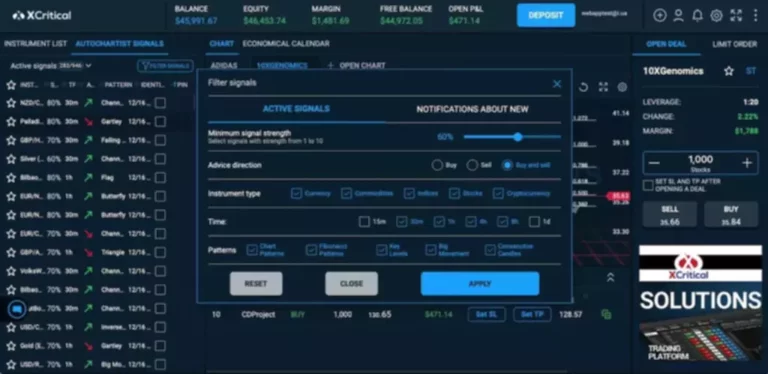Content
An asset, such as a security, is said to be liquid when it can easily be converted to cash. If most stockholders want to sell when company news is bad or buy when it is good, the share value would suffer wild fluctuations as sell and buy prices are driven https://www.xcritical.com/ rapidly down or up. It would then be difficult to complete a trade — hence the security would cease being liquid. The Securities and Exchange Commission says market makers generally must be ready to buy and sell at least 100 shares of a stock they make a market in.
How Do Liquidity Providers Generate Liquidity in the Market?

The most liquid, lowest-cost markets are those where there are no barriers to participation by a wide range of market participants, using a mix of strategies and with a variety of holding periods. Market Makers are obliged to quote both a buy and a sell price in a financial instrument or commodity, essentially making a market for that instrument. Since 2018, the Tokyo liquidity provider vs market maker Stock Exchange has had an ETF Market Making Incentive Scheme[12] in place, which provides incentives to designated market makers who maintain quoting obligations in qualified ETFs. This list of market makers includes Nomura Securities, Flow Traders, and Optiver.

Liquidity Provider vs Market Maker
These are typically banks and other financial firms that buy and sell large quantities of assets to ensure their availability. Tier-2 liquidity providers, that is online brokers and other smaller firms, operate a B2C business model. Some brokers act as market makers and provide liquidity for their customers directly without passing on the risk to the tier-1 LPs. Liquidity providers offer a myriad of benefits that extend across the financial landscape, impacting market participants and the overall efficiency of trading and investing activities. Understanding the advantages that liquidity providers bring to the table is essential for appreciating their pivotal role in maintaining robust and orderly markets.
Challenges and Risks Faced by Liquidity Providers
The market makers provide a required amount of liquidity to the security’s market, and take the other side of trades when there are short-term buy-and-sell-side imbalances in customer orders. In return, the specialist is granted various informational and trade execution advantages. When an investor with a large amount of capital buys and sells extensive quantities of an asset, the impact on prices and other investors could be dramatic. Liquidity providers help the markets maintain equilibrium even in the face of large transactions. Core liquidity providers are typically institutions or banks that underwrite or finance equity or debt transactions and then make a market or assist in the trading of the securities. Liquidity is a crucial factor for the successful completion of transactions in any market.
How Do Financial Markets Stay Liquid?

These pairs present the active trader with opportunities to place profitable trades. Other currency pairs that see a lot of trading volume are the New Zealand dollars vs the US dollar, the Euro vs the British Pounds, and the Euro vs the Japanese Yen. That may be fine if the person can wait for months or years to make the purchase, but it could present a problem if the person has only a few days.
These Liquidity Providers function as a B2B, dealing in large volume, with themselves, brokers, and other smaller investment firms. Apart from these contributing elements mentioned above, some entities take on the duty of ensuring that the forex market enjoys this liquidity rate. The most liquid stocks tend to be those with a great deal of interest from various market actors and a lot of daily transaction volume. Such stocks will also attract a larger number of market makers who maintain a tighter two-sided market. The Liquidity Bridge utilizes smart liquidity aggregation, allowing brokers to combine liquidity from several sources and create a deep and competitive market environment for their clients.
Secondary liquidity providers are brokers and smaller financial institutions that act as intermediaries between tier 1 providers and end customers. One of the greatest benefits of a forex liquidity provider is access to various markets. Access to limited partnerships opens up a wide range of markets, including those for commodities, equities, bonds, and currencies.
- LPs essentially create a conducive trading environment that is attractive to a wide range of participants, from individual investors to large institutional traders.
- The term “market maker” is related to players who “make the market” – i.e., banks, funds, and other institutions, while liquidity providers act as mediators between brokers and market makers.
- So when you place an order, depending on the type of broker, the order is sent to several liquidity providers.
- These Liquidity Providers function as a B2B, dealing in large volume, with themselves, brokers, and other smaller investment firms.
- Liquidity providers perform important functions in the market such as encouraging price stability, limiting volatility, reducing spreads, and making trading more cost-effective.
- Currency pairs are bought and sold, and funds settle in accounts within two days at most.
- By providing a continuous stream of liquidity, they help prevent excessive price volatility and promote stability in the market.
The two instruments usually correlate with each other – their prices move up and down in a similar way. As a result, the margin requirement for the spread is usually much smaller than the combined margin requirements of two separate futures contracts. Though often used interchangeably, Liquidity Providers and Market Makers are not exactly the same.
A liquidity provider is an essential entity that ensures trading activities run smoothly by making purchasing and selling assets easier. They essentially serve as middlemen, ready to complete transactions at predetermined ask and bid prices. This important function contributes to improved liquidity, which is the ease with which assets can be purchased or sold without resulting in large price swings. To close the gap between supply and demand, liquidity providers are essential in lowering the spread between purchasing and selling prices. They support overall financial market stability and efficiency by continuously providing bid and ask prices.
In this section, we will explore various insights from different perspectives regarding the strategies and techniques employed by liquidity providers. It is important to note that liquidity providers play a crucial role in ensuring the smooth functioning of financial markets by offering liquidity to buyers and sellers. Furthermore, liquidity providers can also act as market makers, taking on the role of intermediaries between buyers and sellers. By continuously quoting bid and ask prices, they provide a reference point for traders to transact at any given time. This helps maintain market liquidity even during periods of low trading activity or heightened market uncertainty. Liquidity providers work by constantly observing the market’s state, modifying ask and bid prices as needed, and quickly completing trades to keep liquidity levels high.
To succeed in the market, it’s important to know about liquidity providers and understand their significance, types, and operations. Banks with large balance sheets can accommodate sizable transactions, enabling them to make markets for various financial assets. For example, the world’s largest banks are core liquidity providers in the foreign exchange markets. In summary, liquidity is essential for efficient functioning, risk management, and stability in financial markets.
A charge is earned on each transaction a cryptocurrency liquidity provider makes within a liquidity pool. They can earn more cryptocurrency by trading or selling it in a pool with incentives. A sudden price move may result from low liquidity, and this would lead to wider spreads. Brokers connect to the Electronic Communications Network(ECN) of banks and other market-makers through them. These Liquidity Providers offer BUY and SELL quotes for all forex pairs, and those who deal with them enjoy the tightest spread.
In simple terms, a Liquidity Provider (LP) is an entity that allows trades to happen by providing ‘liquidity,’ which is just a fancy way of saying they make sure there are enough buy and sell orders at any given time. They provide liquidity by placing large amounts of buy and sell orders into the market, which makes it easier for trades to happen. Diving into the world of financial markets, have you ever wondered about the mechanics that make trades so smooth and quick? Ever thought about the invisible hand that ensures a steady stream of prices at all times? That’s the role of a Liquidity Provider, a fundamental but often overlooked player in the markets.

